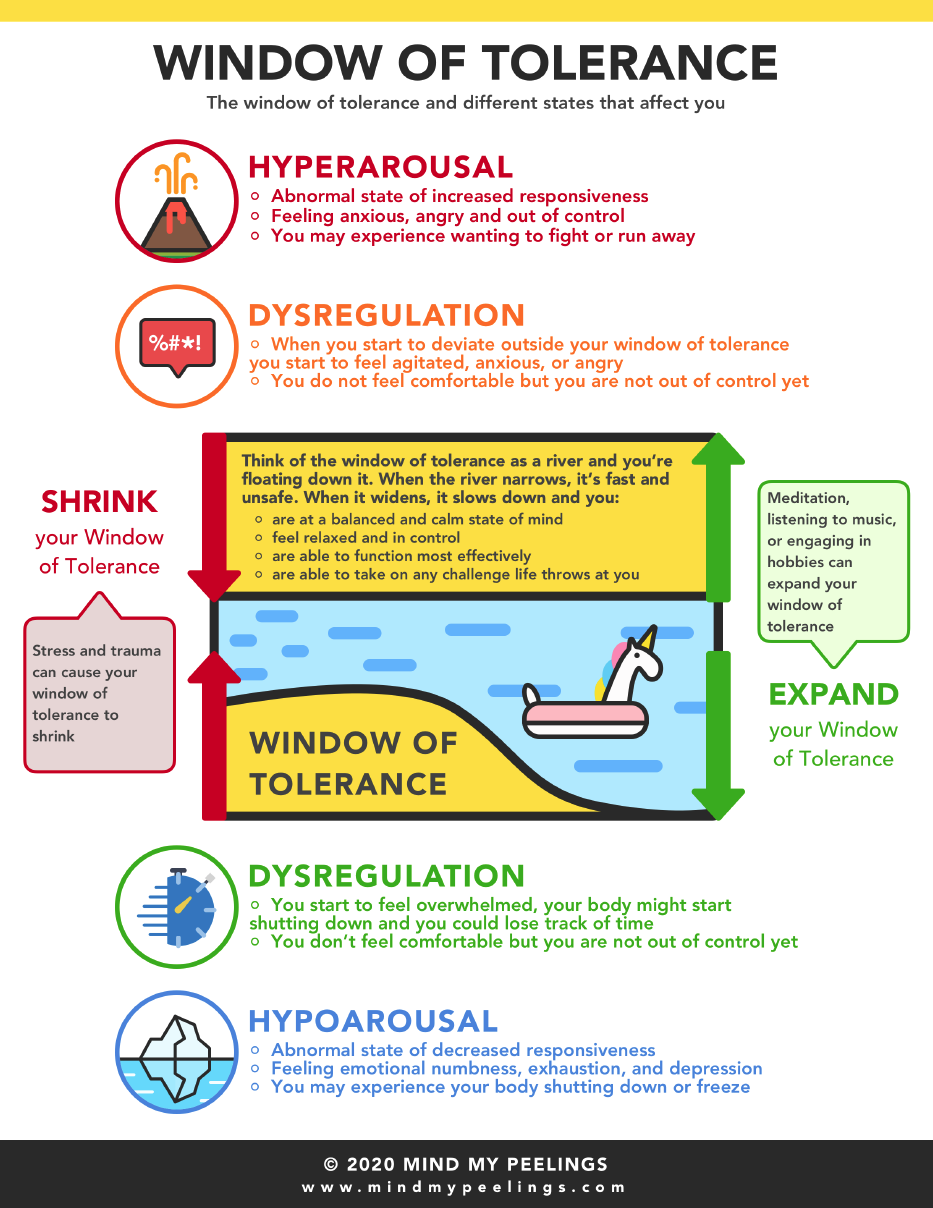Doesn’t it seem like everything is extreme these days? Record-breaking?
I remember Spring in Canada as a period of mild temperatures and gentle rains, gradually making way for sunny summers. Now, you can shovel snow in May, or get heat stroke in March.
Right before the pandemic, the hip cool thing to be was a #bosslady. Now, we’re about “lazy girl jobs” that promise much better work-life balance (and SEO results, thanks to that tagline).
In housing, the term “missing middle” describes the gap between Canadian single-family dwellings and high-rise high-density buildings. As the national housing crisis grows, the middle class shrinks.
But the “missing middle” also applies to climate, politics, economics or almost any thoughtful conversation as algorithms and news cycles continue to polarize us and exhaust us.
So what about another missing middle that’s less visible yet equally impactful? It’s one you can actually do something about.
The Window of Tolerance.

This psychological term was introduced by Daniel J. Siegel, a clinical professor of psychiatry at the UCLA School of Medicine. It refers to the optimal state of arousal where we can effectively manage stress and emotions without becoming overwhelmed or shutting down. In today’s fast-paced, information-saturated world, many of us find ourselves regularly operating outside of this window. The thing is, living outside our optimal state of arousal means we are not open to learning, creativity is not accessible to us, and it’s very difficult for us to relate to others.
The thing is, living outside our optimal state of arousal means we are not open to learning, creativity is not accessible to us, and it’s very difficult for us to relate to others.
When we are traumatized or stressed, the window of tolerance narrows, making it even harder for us to stay within it, rather than pinging between hyper-arousal (the fight/flight/fawn reflex that looks like hyper-vigilance and anxiety) and hypo-arousal (the freeze reflex that looks like numbing with substances — including doom scrolling — and depression). Communications professionals – perhaps more than any other profession – fall prey to this. We’re often adrenaline junkies – working ourselves into a lather to meet deadlines; rising to the challenge of intense scrutiny either from clients, stakeholders, and most often, ourselves; and collapsing at the end of a project, only to then start it all over again. Our brains can have a hard time telling the difference between a sabre-tooth tiger attack, and an incoming mail notification when we’re outside our window of tolerance.
The good news is that while trauma isn’t your fault, you can heal it. And if we’re going to address the many challenging missing middles in our homes, communities, cities, and beyond, we need to access the sweet spot between being overwhelmed and shutting down.
So, how can we do that?
Here are three areas to consider as we optimize and rewire the supercomputers between our ears, as well as an invitation to explore these concepts more deeply in ways that make sense for your background, upbringing and personal struggles:
- Breath Work: Deep breathing techniques, such as diaphragmatic breathing, help activate the parasympathetic nervous system, promoting relaxation and reducing the body’s stress response. By focusing on slow, controlled breaths, you signal to your brain that it’s safe to calm down, leading to a more balanced state of arousal.
- Body Work and Meditation: Body scans and meditation encourage mindfulness by systematically bringing attention to different parts of the body, as well as our passing emotions. This practice helps increase self-awareness and releases physical tension, which can signal to the brain that it’s safe to relax. By combining mental focus with physical relaxation, body work and meditation support emotional regulation and a sense of calm.
- Grounding Techniques: Grounding techniques use the senses to anchor you in the present moment, helping to counteract feelings of dissociation or overwhelm. By engaging with sensory experiences, such as touch, sound, or taste, you activate neural pathways associated with the here and now, bringing your attention away from anxious thoughts and back to the present reality. This process helps regulate your brain’s response to stress and promotes a greater sense of stability.
How are you helping yourself and others recover emotional regulation and reclaim their window of tolerance? It has to start by taking care of yourself – again, something we comms people don’t always do.
By giving our attention and care to emotional resilience and well-being, we can unlock the creativity and openness needed to tackle the pressing challenges we face, from widespread burnout, to climate change and housing inequality – and even that pressing deadline.
Kristen Gross
Senior Consultant and Writer, Curious Public
Related Posts
September 29, 2020
The second wave is coming. Let’s remember the 6 lessons of the first wave
0 Comments3 Minutes


